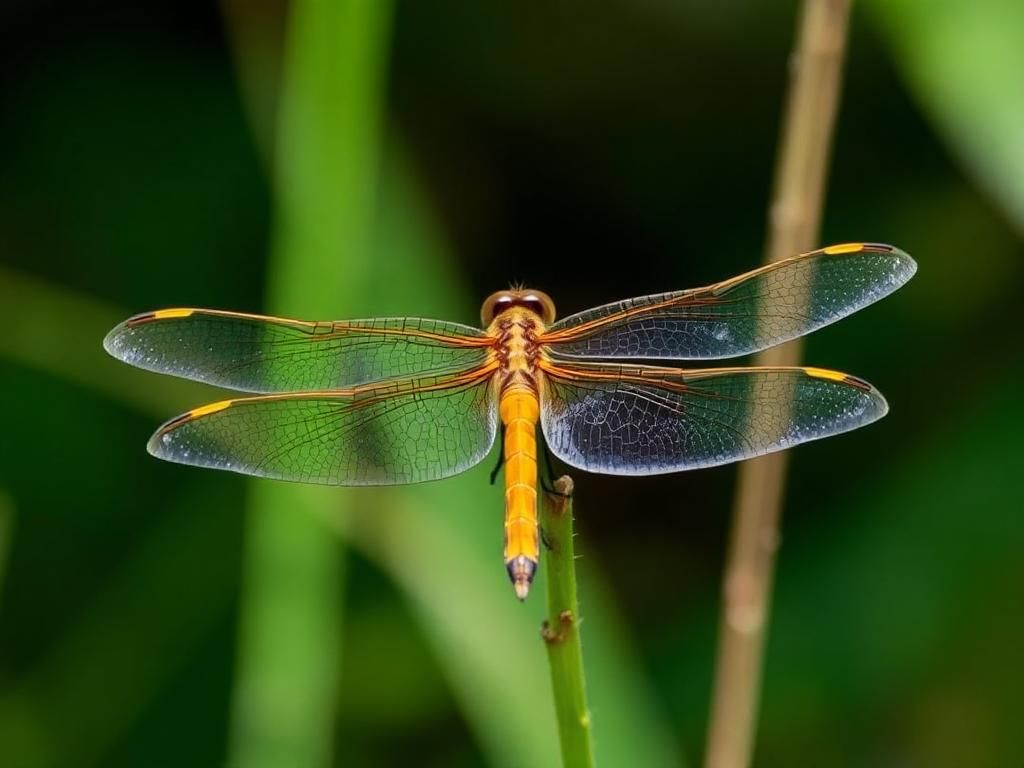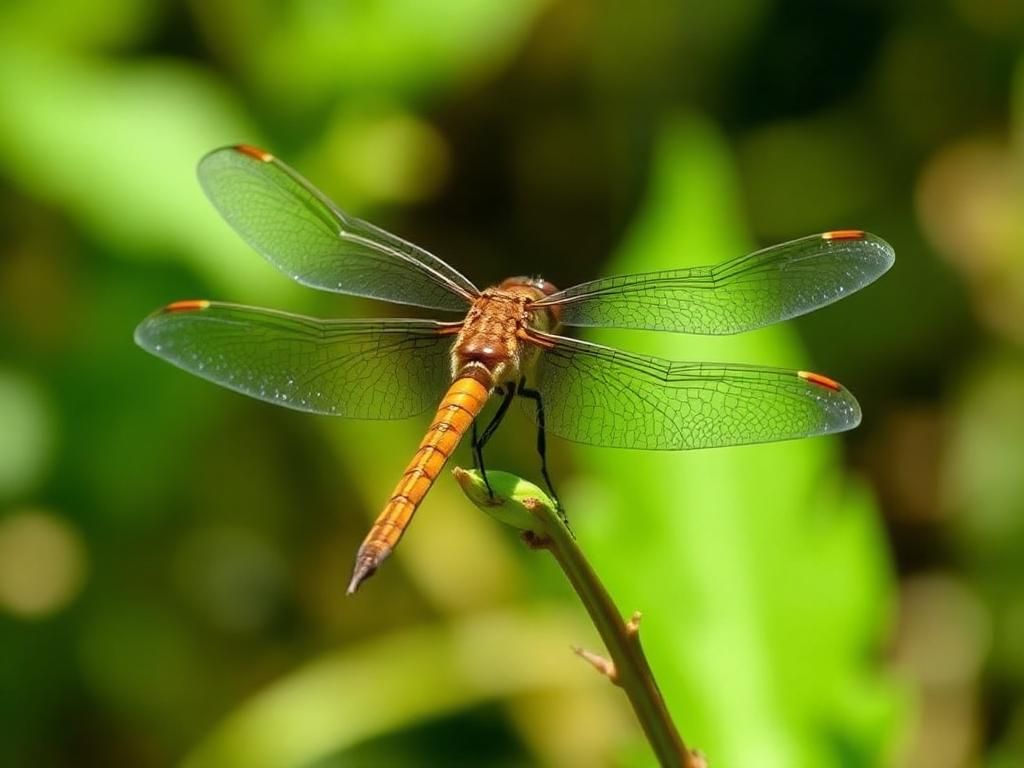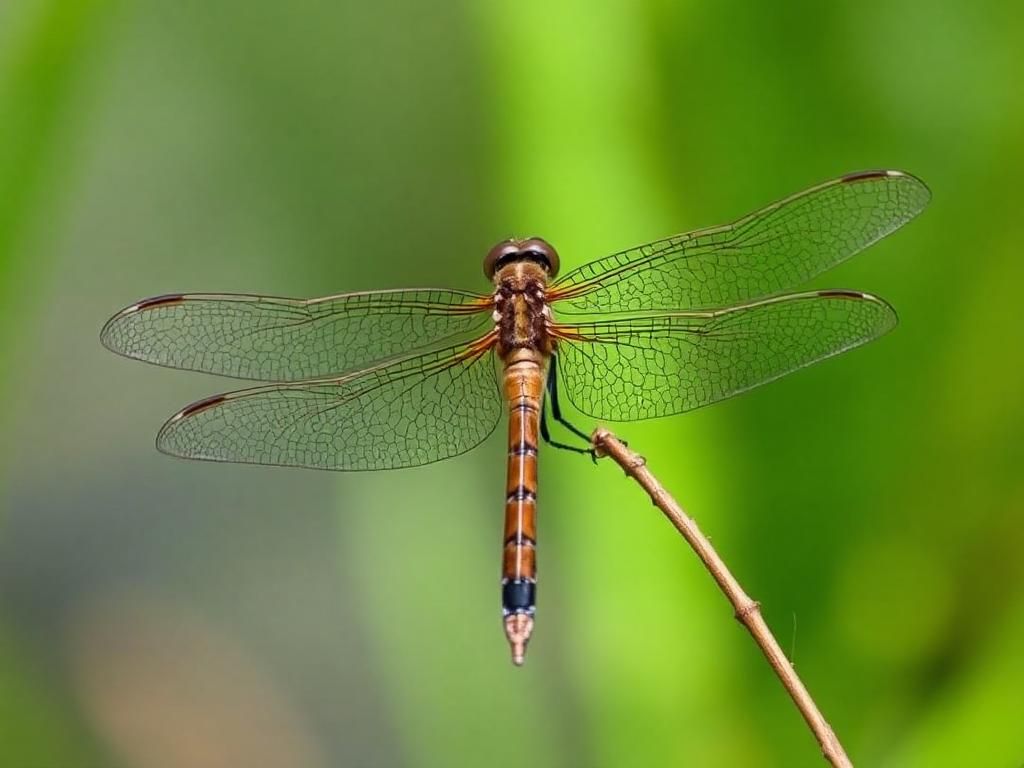Dragonflies are captivating creatures that have intrigued people for centuries with their grace and vibrant colors. They are often perceived as symbols of transformation, joy, and adaptability. Across cultures, the symbolism attributed to dragonflies varies, reflecting a deep connection to natural phenomena and human experiences. This article will delve into what dragonflies represent, exploring their characteristics, cultural significance, and spiritual meanings.
Dragonflies in Nature
Characteristics of Dragonflies
Dragonflies belong to the order Odonata and are known for their stunning physical attributes. With their large, multifaceted eyes, slender bodies, and expansive wings, they captivate anyone fortunate enough to catch a glimpse of them. The wings of a dragonfly can span up to 5-6 inches and come in an array of dazzling colors, from iridescent greens and blues to more subdued browns and yellows. Their exceptional flying abilities allow them to hover, dart, and even fly backward, making them rather unique among insects.
They thrive in a variety of habitats, including freshwater lakes, rivers, and wetlands. The lifecycle of a dragonfly begins with an egg laid in water, transitioning through a larval stage known as a nymph before emerging as a fully formed adult. This remarkable transformation is a poignant metaphor for what dragonflies represent in many cultures—change and personal evolution.
Role in the Ecosystem
Dragonflies play an invaluable role in our ecosystem, notably through their predatory behavior. As voracious hunters, adult dragonflies consume vast quantities of insects, including mosquitoes, making them excellent allies in pest control. Their larval stage is equally important as it thrives underwater, contributing to the health of aquatic ecosystems and serving as a food source for numerous animals.
Cultural Significance of Dragonflies
Dragonflies in Mythology
Throughout history, dragonflies have made frequent appearances in various mythologies. In Native American culture, dragonflies are seen as symbols of transformation and change, often linked to the spirit world. Stories abound that depict dragonflies as messengers from spiritual realms, guiding individuals through personal transitions.
In Japanese mythology, dragonflies are revered as symbols of strength, courage, and happiness. They embody the essence of summer and are often celebrated in traditional art and crafts, showcasing their vibrant forms.
Symbolic Meanings Across Cultures
Native American Perspectives
For many Native American tribes, dragonflies represent powerful change and transformation. They are seen as reminders to embrace life’s transitions with an open heart and mind. The arrival of a dragonfly signifies a spiritual awakening and the importance of living in the present moment, guiding individuals towards self-discovery.
Japanese Culture
In Japan, dragonflies are symbols of strength and happiness. The beloved tombo, as they are known, features prominently in traditional art forms and poetry, often representing the beauty of nature and life’s fleeting moments. Fangio Nagisa, a renowned Japanese artist, expressed this sentiment in his works showcasing dragonflies as embodiments of joy and resilience.
European Folklore
European folklore presents a fascinating view of dragonflies. In some traditions, they were considered harbingers of good luck, while in others, they were seen as supernatural creatures tied to the mystical realms. Dragonflies appeared in stories as protectors against evil spirits and as harbingers of elemental change in nature.
Common Symbolism of Dragonflies

Change and Transformation
The metamorphosis of a dragonfly—from a water-bound nymph to an aerial adult—serves as a powerful metaphor for change and transformation in human life. Many people find inspiration in their journey, viewing it as a reminder that life’s transitions, though challenging, can be beautiful and lead to growth.
Personal stories abound, such as one individual who interpreted the sighting of a dragonfly during a pivotal moment in life as a sign to pursue new paths and embrace change. Such experiences resonate with the transformative symbolism linked to these extraordinary insects.
Adaptability and Flexibility
Dragonflies are remarkable for their adaptability and resilience. They thrive in diverse environments, from humid wetlands to arid regions, which mirrors the necessary qualities we often seek in our own lives. The ability of dragonflies to adjust to their surroundings is a reminder of the strength of adaptability and flexibility in the face of challenges.
This adaptability is an inspiration for personal growth, encouraging individuals to remain open to new experiences and embrace change rather than resist it.
Joy and Positivity
Another profound representation of dragonflies is their association with joy and positivity. Their iridescent wings and agile movements evoke feelings of happiness and lightheartedness. Many people find their presence uplifting, symbolizing a moment of pure joy in the ever-moving tapestry of life. The sighting of a dragonfly may serve as a reminder to cherish the small joys that life brings.
Spiritual and Metaphysical Associations
Dragonflies in Dream Interpretation
When dragonflies appear in dreams, they often signal profound messages regarding personal growth, transformation, and self-awareness. Common interpretations suggest that seeing a dragonfly in dreams may point towards an awakening of consciousness, prompting individuals to reflect on their life choices and spiritual journey.
The dream of a dragonfly can encourage introspection, serving as a reminder to look within and embrace one’s true self to foster growth and understanding.
Spiritual Meaning
In spiritual contexts, dragonflies represent spiritual awakening and connection to the divine. Their ethereal qualities and association with light are often viewed as indicators of enlightenment and guidance. Many individuals engage with the symbolism of dragonflies during meditation or spiritual practices, seeking insight and support on their journeys.
Modern Interpretations and Uses
Dragonflies in Art and Literature
The influence of dragonflies extends into contemporary art and literature, where they are often featured as symbols of change, beauty, and the fleeting nature of life. Artists use dragonflies in their works to convey deeper meanings, utilizing their delicate forms to capture the essence of transformation.
Prominent literary works, such as “The Dragonfly Effect” by Jennifer Aaker, explore themes of social change and the impact of small actions—a direct reflection of what dragonflies represent.

Use in Personal Growth and Mindfulness
Dragonflies have become symbols in personal growth and mindfulness workshops, where their ability to adapt and embrace change is celebrated. Many incorporate dragonfly imagery into their mindfulness practices, using the symbol to help reinforce goals of transformation and self-discovery.
Common practices include meditation sessions that focus on the qualities embodied by dragonflies, fostering acceptance and a positive mindset towards change.
Conclusion
The rich symbolism associated with dragonflies encompasses themes of transformation, adaptability, and joy, making them a source of inspiration across cultures and contexts. Whether viewed in nature, art, or dreams, dragonflies remind us of the beauty of change and the potential for growth in our lives. Readers are encouraged to explore their personal connections with these remarkable creatures, reflecting on how the essence of what dragonflies represent resonates in their own experiences.
References and Further Reading
For those interested in diving deeper into the significance of dragonflies, consider exploring the following resources:
– [“Dragonflies: A Natural History”](https://www.amazon.com/Dragonflies-Natural-History-Jeffrey-Horn/dp/1604814751) by Jeffrey Horn
– [The Symbolism of Dragonflies in Native American Culture](https://www.native-languages.org/dragonfly.htm) – An exploration of various Native American perspectives on dragonflies.
FAQ
1. What do dragonflies symbolize in different cultures?
Dragonflies symbolize change, transformation, and spirituality in various cultures, including Native American and Japanese traditions.
2. How do dragonflies contribute to the ecosystem?
Dragonflies play a vital role in controlling pest populations and maintaining healthy aquatic ecosystems.
3. What does it mean to see a dragonfly?
Seeing a dragonfly can signify a moment of transformation, positivity, or spiritual awakening.
4. Are dragonflies seen as good luck?
Yes, in many cultures, dragonflies are associated with good luck and positive change.
5. How does the dragonfly’s life cycle reflect its symbolism?
The transformation from a nymph to a flying adult dragonfly symbolizes personal growth and adaptability.
6. Can dragonflies appear in dreams?
Yes, dragonflies in dreams often relate to self-discovery, growth, and spiritual awareness.
7. What modern uses do dragonflies have in mindfulness practices?
Dragonflies are used in mindfulness to symbolize transformation and the acceptance of change.
8. How are dragonflies portrayed in art?
In art, dragonflies often symbolize beauty, joy, and the fleeting nature of life.
9. What is the spiritual meaning of dragonflies?
Spiritually, dragonflies represent connection to the divine and enlightenment.
10. How can I incorporate dragonfly symbolism into my life?
You can incorporate dragonfly symbolism by reflecting on change, embracing adaptability, and seeking joy in everyday moments.
| Symbolism | Description | Cultural Reference |
|---|---|---|
| Change | Represents personal growth and transformation. | Native American Dream Interpretation |
| Joy | Symbolizes happiness and positivity. | Japanese Art and Poetry |
| Adaptability | Embodies resilience in diverse environments. | Modern Mindfulness Practices |
| Spiritual Awakening | Connection to the divine and enlightenment. | Spiritual Practices |
